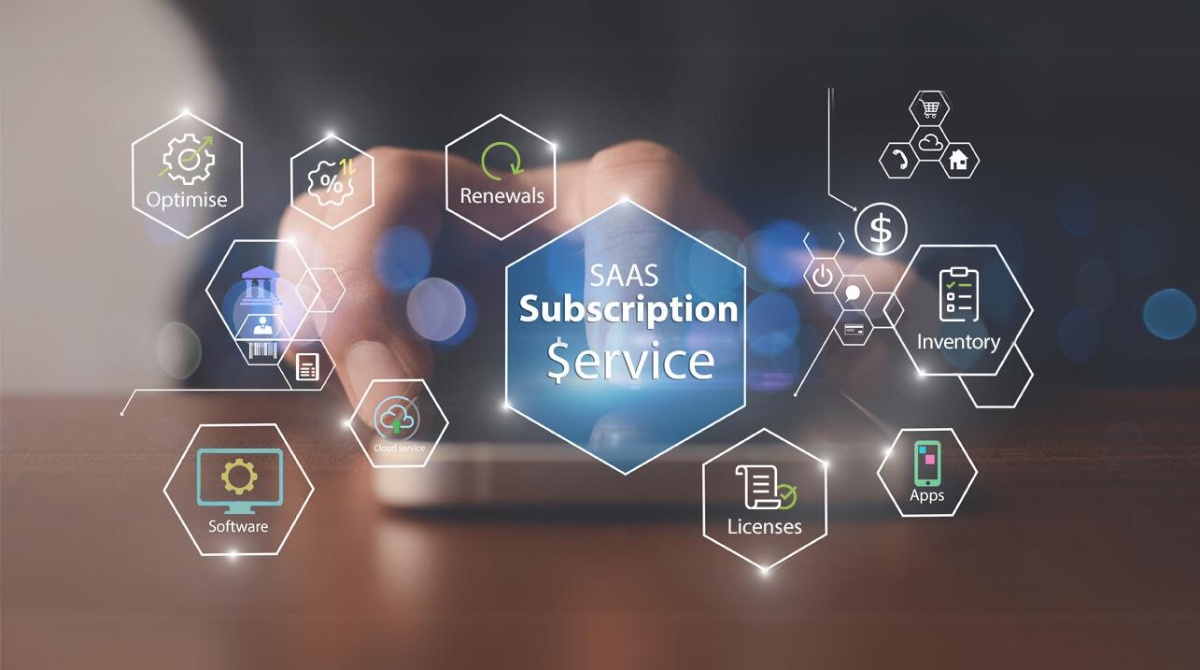Introduction
Welcome to the world of Software as a Service (SaaS) – a rapidly growing industry that provides businesses with the flexibility and convenience of accessing software applications via the internet. As the demand for SaaS continues to increase, it becomes crucial for SaaS companies to scale their operations effectively. Scaling a SaaS business requires careful planning, strategic decision-making, and a deep understanding of the market and target audience.
In this article, we will explore the key steps you need to take to scale your SaaS business successfully. From understanding your customer base to implementing effective marketing strategies, we will cover all the essential aspects that will fuel your growth and help you stay ahead of the competition.
Scaling a SaaS business is not just about acquiring more customers; it’s about ensuring that your infrastructure, team, and processes can support your growing user base while maintaining high-quality service. With the right approach, you can maximize your revenue potential, improve customer satisfaction, and establish yourself as a leader in the SaaS industry.
In the following sections, we will delve deeper into each of the key steps required to scale your SaaS business. By implementing these strategies and best practices, you will be well-equipped to navigate the challenges and opportunities that come with growth.
So, let’s dive in and discover how to scale your SaaS business for success!
Understand your customer base
Before you can effectively scale your SaaS business, it is vital to have a deep understanding of your customer base. By understanding their needs, pain points, and preferences, you can tailor your products and services to meet their demands and attract new customers. Here are some key considerations:
1. Conduct thorough market research: Take the time to conduct market research to identify your target customers and their specific needs. This research will provide valuable insights into your customers’ behavior, demographics, and competitive landscape.
2. Collect and analyze customer feedback: Engage with your existing customers to gather feedback on your product or service. This feedback will help you discover areas for improvement and identify new opportunities for growth.
3. Create buyer personas: Develop detailed buyer personas that represent your ideal customers. These personas should include information such as demographics, motivations, pain points, and buying behaviors. Having a clear understanding of your target audience will guide your marketing efforts and product development.
4. Utilize data analytics: Leverage data analytics tools to gather insights about your customers’ usage patterns, conversion rates, engagement metrics, and churn rates. This data will allow you to make data-driven decisions and optimize your strategy for growth.
5. Stay updated on industry trends: Keep a pulse on industry trends, technological advancements, and market developments that may impact your customer base. Staying informed and adaptable will enable you to stay ahead of the curve and provide innovative solutions.
6. Engage with your customers: Foster a strong relationship with your customers through regular communication and engagement. This can be achieved through surveys, webinars, user groups, or social media channels. By actively listening to your customers, you can shape your offerings to better address their needs.
By understanding your customer base, you can create a customer-centric approach that drives customer acquisition and retention. This knowledge will also guide your decision-making when it comes to product development, marketing strategies, and customer support.
Remember, understanding your customers is an ongoing process, and it’s crucial to continuously gather feedback and adapt as their needs evolve. With a deep understanding of your customers, you can position your SaaS business for sustainable growth.
Build a scalable infrastructure
One of the key challenges in scaling a SaaS business is ensuring that your infrastructure can handle the increasing demands of your growing customer base. Building a scalable infrastructure is essential to provide a seamless user experience, maintain high performance, and accommodate future growth. Here are some steps to help you build a scalable infrastructure:
1. Choose the right hosting provider: Select a hosting provider that is known for reliability, scalability, and security. Consider cloud-based hosting solutions such as Amazon Web Services (AWS), Microsoft Azure, or Google Cloud Platform, which provide scalable infrastructure options.
2. Utilize scalable database solutions: Traditional relational databases may not be scalable enough for a growing SaaS business. Consider using NoSQL or NewSQL databases like MongoDB or Cassandra, which can handle large volumes of data and scale horizontally.
3. Implement a load balancing strategy: Distribute incoming traffic across multiple servers using load balancing techniques to maintain optimal performance. Load balancers can distribute traffic based on server capacity, geographic location, or other metrics.
4. Adopt a microservices architecture: Break down your application into smaller, independent services that can be developed, deployed, and maintained separately. This allows for easier scalability, as different components can be scaled independently according to demand.
5. Utilize caching mechanisms: Implement caching mechanisms to reduce database load and improve response times. Utilize technologies like Memcached or Redis to store frequently accessed data in memory.
6. Automate infrastructure management: Utilize infrastructure-as-code tools like Ansible, Chef, or Puppet to automate the provisioning and management of your infrastructure. This ensures consistency, scalability, and easy replication.
7. Continuous monitoring and optimization: Implement monitoring and alerting systems to proactively identify bottlenecks and performance issues. Regularly analyze system metrics and make necessary optimizations to ensure efficient resource allocation.
By building a scalable infrastructure, you can accommodate your growing customer base without compromising performance, reliability, or security. This scalability will enable your SaaS business to handle increased traffic, user demand, and feature enhancements, allowing for uninterrupted growth and customer satisfaction.
Hire the right team
Achieving scalability in your SaaS business requires assembling a talented and dedicated team that can support your growth. Hiring the right team members with the necessary skills and expertise is crucial to drive innovation, deliver high-quality service, and sustain your business’s upward trajectory. Here are some steps to help you hire the right team:
1. Clearly define roles and responsibilities: Before you start hiring, clearly define the roles and responsibilities that you need to fill. This will help you identify the specific skills and qualifications required for each position.
2. Seek industry experience: Look for candidates with relevant industry experience in SaaS or related fields. They will possess valuable knowledge and insights that can contribute to your business’s growth and success.
3. Focus on cultural fit: Assess candidate’s cultural fit within your organization. Look for individuals who align with your company values, work well in teams, and can adapt to a dynamic and fast-paced environment.
4. Evaluate technical expertise: Depending on the role, evaluate candidates’ technical skills and expertise. Assess their knowledge of relevant programming languages, tools, and technologies used in the SaaS industry.
5. Conduct thorough interviews: Conduct in-depth interviews to assess candidates’ problem-solving abilities, communication skills, and their ability to work in a team. Ask relevant and challenging questions to gauge their fit within your organization.
6. Consider remote work capabilities: With the rise of remote work, consider hiring team members who can work remotely and collaborate effectively with the rest of the team. This widens your talent pool and allows you to attract top talent from around the world.
7. Provide ongoing training and development: Invest in the professional development of your team members. Offer training opportunities, provide mentorship, and encourage continuous learning. This will help them stay updated with the latest industry trends and technologies.
8. Foster a positive company culture: Create a positive work environment that promotes collaboration, innovation, and employee well-being. A strong company culture will attract top talent and keep your team engaged and motivated.
By hiring the right team, you can build a strong foundation for your SaaS business’s growth and success. A talented and dedicated team will drive innovation, deliver exceptional customer service, and contribute to the overall scalability and sustainability of your business.
Focus on customer success
One of the critical factors in scaling a SaaS business is ensuring the success and satisfaction of your customers. By prioritizing customer success, you can drive retention, generate positive word-of-mouth, and attract new customers. Here are some steps to help you focus on customer success:
1. Provide exceptional customer support: Offer reliable and responsive customer support that goes beyond just troubleshooting. Establish multiple channels for customer communication, such as email, live chat, and phone support, to provide quick and effective assistance.
2. Develop a robust onboarding process: Create an onboarding process that guides new customers through the setup and implementation of your product or service. Provide resources, tutorials, and personalized assistance to ensure a smooth and successful onboarding experience.
3. Offer proactive engagement: Engage with your customers proactively to address their needs, gather feedback, and offer additional value. Use email campaigns, in-app messaging, and surveys to keep customers informed and connected throughout their journey.
4. Implement customer success metrics: Define key metrics that measure customer success, such as customer churn rate, customer satisfaction score (CSAT), and net promoter score (NPS). Regularly monitor and analyze these metrics to identify areas for improvement and make strategic decisions.
5. Personalize customer experiences: Tailor your interactions and communications to individual customers. Use customer data and segmentation strategies to deliver personalized messages, recommendations, and offers that cater to their specific needs and preferences.
6. Foster a community: Create an online community or forum where customers can connect, share insights, and help each other. This fosters a sense of belonging and allows customers to tap into a collective knowledge base.
7. Continuously iterate and improve: Regularly gather customer feedback and use it to drive product enhancements and improvements. Stay responsive to their evolving needs and expectations, and strive to exceed their expectations.
By focusing on customer success, you can create loyal advocates who will not only continue to use your product or service but also promote it to others. By prioritizing their success, you establish a strong foundation for long-term customer relationships and ensure sustainable growth for your SaaS business.
Improve your product development process
Continuous improvement and innovation are essential for scaling a SaaS business successfully. Improving your product development process allows you to deliver high-quality, feature-rich products that meet the evolving needs of your customers. Here are some steps to help you improve your product development process:
1. Gather and prioritize customer feedback: Actively seek feedback from your customers to understand their pain points, feature requests, and suggestions for improvement. Use this feedback to prioritize product enhancements and drive your development roadmap.
2. Adopt an agile methodology: Implement an agile product development framework, such as Scrum or Kanban, to increase collaboration, flexibility, and efficiency. Break down projects into smaller, manageable tasks, and iterate quickly based on customer input.
3. Conduct regular testing and quality assurance: Establish a comprehensive and rigorous testing process to ensure that your products are bug-free, stable, and deliver a seamless user experience. Invest in automation testing tools and practices to speed up the testing process.
4. Embrace continuous integration and deployment: Automate the integration and deployment of new features and updates to streamline the product release process. Continuous integration and deployment help reduce risks, improve efficiency, and enhance the overall development cycle.
5. Implement a feedback loop: Establish a structured feedback loop between your development team and other departments, such as customer support and sales. This collaboration ensures that customer insights and market trends are effectively communicated, enabling your team to make informed decisions.
6. Foster cross-functional collaboration: Encourage collaboration between different teams, such as developers, designers, and product managers, to promote knowledge sharing, creativity, and a holistic approach to product development.
7. Establish a culture of innovation: Create an environment that embraces innovation and encourages team members to explore new ideas and experiment with emerging technologies. Foster a culture where mistakes are treated as learning opportunities, and continuous learning is valued.
8. Incorporate user experience (UX) design principles: Focus on enhancing the user experience of your products by incorporating UX design methodologies. Conduct user research, create intuitive interfaces, and continuously iterate based on user feedback to create a delightful user experience.
By improving your product development process, you can deliver innovative, high-quality products that meet the evolving demands of your customers. This not only drives customer satisfaction and loyalty, but also positions your SaaS business as a leader in the market, attracting new customers and driving sustainable growth.
Implement effective marketing strategies
Effective marketing strategies play a crucial role in scaling a SaaS business. They help you increase brand awareness, attract potential customers, and drive conversions. Here are some steps to help you implement effective marketing strategies:
1. Define your target audience: Clearly identify your target market and create buyer personas to understand their demographics, pain points, and motivations. This will help you tailor your marketing efforts to reach the right audience.
2. Develop a compelling brand identity: Create a strong and distinct brand identity that sets you apart from competitors. Establish a compelling value proposition, and communicate it consistently through your branding, messaging, and visual elements.
3. Leverage digital marketing channels: Utilize various digital marketing channels to reach your target audience effectively. This can include search engine optimization (SEO), content marketing, social media marketing, email marketing, and paid advertising.
4. Create educational content: Position your brand as a thought leader by creating educational and valuable content that addresses the pain points and challenges of your target audience. This can include blog articles, whitepapers, ebooks, webinars, and video tutorials.
5. Optimize your website for conversions: Create a user-friendly and visually appealing website that encourages visitors to take action. Use persuasive call-to-actions, optimize landing pages, and implement lead capture forms to generate leads and drive conversions.
6. Implement a customer referral program: Encourage your satisfied customers to refer your product or service to others. Offer incentives such as discounts, free trials, or rewards to motivate existing customers to spread the word.
7. Build strategic partnerships: Seek out strategic partnerships with complementary businesses or influencers in your industry. Collaborating with other brands can expand your reach, create synergies, and introduce your product to new audiences.
8. Analyze and optimize your marketing efforts: Regularly analyze key marketing metrics such as website traffic, conversion rates, and customer acquisition costs. Use tools like Google Analytics and marketing automation platforms to track performance and make data-driven decisions to optimize your marketing campaigns.
By implementing effective marketing strategies, you can attract a wider audience, generate quality leads, and increase your customer base. These strategies will help you establish your brand as a market leader, fueling the growth and scalability of your SaaS business.
Monitor and analyze key metrics
Monitoring and analyzing key metrics is crucial for scaling a SaaS business successfully. It allows you to track your progress, identify areas for improvement, and make data-driven decisions. Here are some steps to help you monitor and analyze key metrics:
1. Identify relevant metrics: Determine the metrics that are most relevant to your business goals and objectives. This may include customer acquisition cost (CAC), customer lifetime value (CLTV), churn rate, conversion rate, and revenue growth.
2. Set up tracking systems: Implement tracking systems and analytics tools to collect accurate and reliable data. Utilize tools like Google Analytics, Mixpanel, or Kissmetrics to track website traffic, user behavior, conversion rates, and other relevant metrics.
3. Establish key performance indicators (KPIs): Define KPIs that align with your business goals. These KPIs should be specific, measurable, attainable, relevant, and time-bound. Regularly track and assess your performance against these KPIs.
4. Analyze customer behavior: Gain insights into how your customers interact with your product or service. Monitor user engagement metrics, feature usage patterns, and customer feedback. Identify any bottlenecks or pain points that may hinder user experience.
5. Conduct A/B testing: Test different variations of your marketing campaigns, website design, and product features to identify what resonates best with your audience. A/B testing helps you optimize your strategies and improve conversion rates.
6. Segment your data: Segment your customer data based on various criteria such as demographics, location, or engagement level. This allows for more targeted marketing efforts, personalized communication, and customized product offerings.
7. Use cohort analysis: Analyze the behavior and performance of specific groups of users over time. Cohort analysis helps you understand user retention, engagement, and lifetime value. It can also provide insights into how different customer segments behave.
8. Regularly review and act upon the insights: Schedule regular reviews of your metrics and performance. Analyze the data, identify trends, and make informed decisions based on the insights gathered. Take proactive actions to optimize your strategies and processes.
By monitoring and analyzing key metrics, you can track your progress, identify areas for improvement, and make informed decisions to drive the scalability and growth of your SaaS business. Remember, data-driven decision-making is essential for staying competitive in the dynamic SaaS market.
Maintain a strong company culture
A strong company culture is the backbone of a successful and scalable SaaS business. It sets the foundation for employee engagement, collaboration, and innovation. Maintaining a strong company culture is essential for attracting and retaining top talent, fostering a positive work environment, and driving long-term growth. Here are some steps to help you maintain a strong company culture:
1. Define core values: Clearly define your company’s core values that align with your mission and vision. These values serve as guiding principles for your organization and provide a sense of purpose and identity.
2. Lead by example: Leadership plays a crucial role in setting the tone and modeling the desired behaviors. Ensure that leaders within your organization embody the company’s values and consistently demonstrate them in their actions and decisions.
3. Foster open communication: Encourage open and transparent communication throughout the organization. Create channels for feedback, suggestions, and ideas from all employees. Regularly communicate company updates and milestones to keep everyone informed and engaged.
4. Prioritize employee wellness: Invest in the well-being of your employees by promoting work-life balance, offering wellness programs, and fostering a supportive and inclusive environment. Recognize and reward their contributions to create a positive employee experience.
5. Encourage continuous learning: Foster a learning culture by providing opportunities for employee growth and development. Offer training programs, encourage participation in industry conferences, and support ongoing learning initiatives.
6. Promote collaboration and teamwork: Facilitate cross-functional collaboration and teamwork through project-based assignments, team-building activities, and regular knowledge-sharing sessions. Encourage employees to collaborate and learn from one another to drive innovation.
7. Celebrate achievements: Recognize and celebrate individual and team achievements to foster a sense of accomplishment and motivation. Acknowledge and reward employees who embody the company’s values and contribute to its success.
8. Embrace diversity and inclusion: Foster a diverse and inclusive workplace where every employee feels valued, respected, and included. Encourage diverse perspectives and actively seek out diverse talent to bring different ideas and experiences to the table.
By maintaining a strong company culture, you create a positive and inspiring work environment that attracts and retains top talent. A strong culture fosters employee satisfaction, engagement, and loyalty, leading to increased productivity, innovation, and long-term success for your SaaS business.
Conclusion
Scaling a SaaS business requires a strategic and holistic approach that encompasses various aspects of your organization. By understanding your customer base, building a scalable infrastructure, hiring the right team, focusing on customer success, improving your product development process, implementing effective marketing strategies, monitoring key metrics, and maintaining a strong company culture, you can position your SaaS business for sustainable growth.
Understanding your customers and their needs is essential for tailoring your products and services to meet their demands. Building a scalable infrastructure ensures that your business can handle increased demand without compromising performance. Hiring the right team with the necessary skills and expertise drives innovation and high-quality service. Focusing on customer success cultivates loyalty and attracts new customers.
Improving your product development process allows you to deliver innovative solutions and meet the evolving needs of your customers. Implementing effective marketing strategies helps you attract and convert potential customers. Monitoring and analyzing key metrics provide valuable insights to guide your decision-making and optimize your strategies. Maintaining a strong company culture fosters employee engagement, collaboration, and long-term success.
Remember, scaling a SaaS business is an ongoing process that requires continuous adaptation and improvement. Stay agile, embrace innovation, and remain customer-focused. Regularly assess your strategies, make data-driven decisions, and adapt to market trends and customer needs. By following these steps and continuously striving for excellence, you will position your SaaS business for sustained growth and success in a competitive market.

























